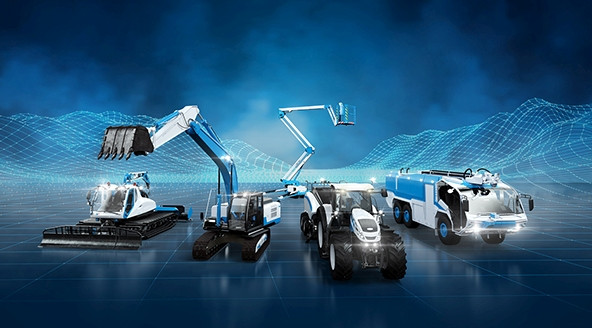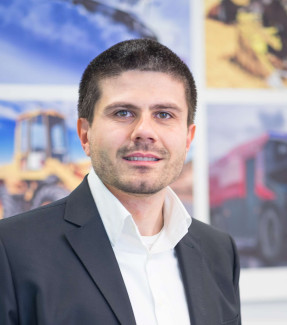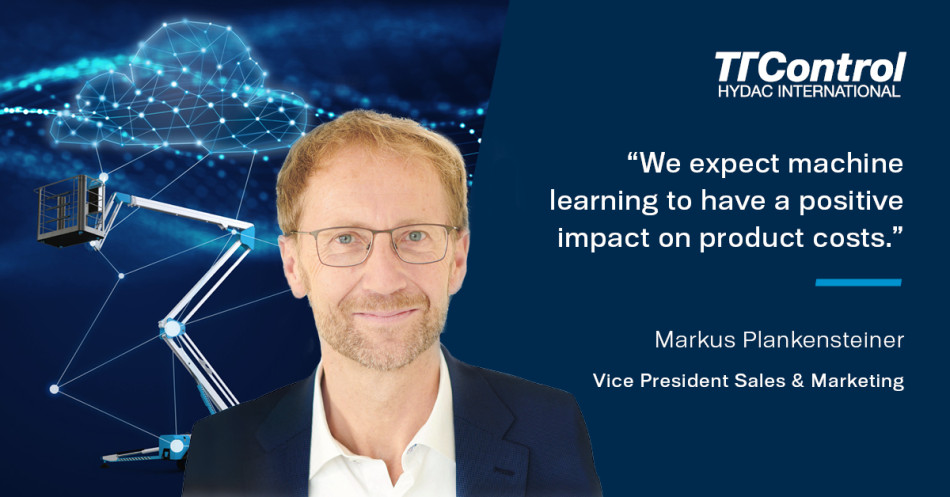
Each year, the State of the Industry by OEM Off Highway evaluates key trends and technologies in the heavy equipment industries. The industry source looks at current and future market conditions, as well as regulations that are currently impacting or could impact how the industry develops its equipment in the coming years.
TTControl experts Janosch Fauster, Director Application Development Center, and Markus Plankensteiner, Vice President Sales & Marketing share insights about Internet of Things (IoT), connectivity and automation and smart systems.
This interview was originally published at OEM Off-Highway


Data, IoT & Connectivity
What will be the best use cases for the Internet of Things (IoT) and data in the coming years?
We see huge potential to improve machine and process management with IoT solutions in the coming years. The collection of data at the point of the machine will increase and enable deeper analysis in the cloud with technologies such as streaming analytics and big data. This will enable machine builders, owners and operators to vastly improve the economic efficiency of their processes.
What potential do you see in the use of artificial intelligence and augmented/virtual reality –both for the design and manufacture of products, as well as within equipment?
Emerging technologies will advance machinery development and operator function in the future. On development projects, we already benefit from fine-tuning machine processes, as well as quality control on the equipment. A perception algorithm, for instance, can observe harvested grain quality and automatically optimize the harvesting process.
Sophisticated assistance functions allow less skilled workers to be more efficient and increase the safety of operators and bystanders by advanced perception systems. Augmented and virtual reality can be of value for operating equipment in remote locations or hazardous environments. A combination of automated propulsion and augmented reality can support the operator in low-visibility scenarios.
What advancements do you see on the horizon for connectivity and machine learning in the next decade?

We expect machine learning to have a positive impact on product costs. Also, some spillover effects from automotive can lead to reduced chip and sensor costs. That will be necessary, since multiple Central Processing Unit (CPU) cores, accelerators and Graphics Processing Units (GPUs) will have to execute the growing number of advanced assistance functions, resulting in an exponential growth in the amount of software. A short time to market can still be ensured, despite facing massive complexity, by relying on certified chips, ECUs and robust software frameworks.
What challenges remain for the continued adoption of data, IoT and connectivity-related technologies or systems?
Technology in emerging technologies is progressing a great deal. The current innovation cycle for some key components is about two years, where the new generation outperforms the previous generation by hundreds of percent in every aspect of performance. This fuels challenges relating to obsolescence handling – remember, for example, the switch to 5G on one hand and sunsetting 3G on the other hand.
The automotive industry postponed its plans for level 4 and level 5 autonomy as a result of the advancements in computational powers and deep neural networks that remained necessary. We think the heavy equipment industry can learn from that experience by setting realistic targets and by better appraising the investments needed to implement our use cases.
Automation & Smart Systems
What further benefits will automation bring to the heavy vehicle and equipment industries?
Many heavy vehicles are expensive, high-tech pieces of equipment used in labor-intensive industries. Skilled operators are scarce, but the highest level of machine performance and safety are still expected. Automated quality control and the automated fine-tuning of operational parameters enable also less experienced operators to achieve high levels of productivity.
Challenges & Opportunities
What are the biggest challenges facing the industry currently, or that you see the industry facing in the coming years?
The industry is transitioning towards “software-based vehicles”. While innovation on the mechanical parts, hydraulics and engines remains important, a large part of the innovation is in the software functions. Today, big OEMs in the off-highway market employ more software engineers than mechanical engineers. This trend will continue and poses many new challenges: can a buyer of a piece of equipment expect frequent software updates adding new functionality, maybe for free, for the next five to ten years? How can the costs of continuous security fixes be covered? Will “software-defined” heavy equipment also follow the route to software-as-a-service offerings? Maybe the future customer won’t buy the equipment anymore, but only the service the machinery performs.
What are some of the biggest opportunities you see in the industry?
We see an increasing need for technology to support the upcoming industry transition. Vehicle manufacturers are, for example, challenged to reduce the increasing complexity of software, which can happen by adopting platform solutions allowing several, more efficient software layers.
We address this need with TTControl’s Application Development Center, which provides emerging technologies with knowledge and software development support. Our customers benefit from technology transfer within the TTTech Group that TTControl is part of. This also includes the increasingly important topic of functional safety and the security of modern mobile machinery.
Are there any technologies or trends which you are currently excited about in the heavy-duty vehicle industry, or most looking forward to seeing in the coming years?
There are several very exciting technologies ahead of us. Smart farming will have a profound impact on the daily work of agronomists. Alternative drive systems and electrification are the response to demands for sustainability by growing populations and mega cities. The Internet of Things (IoT), cloud solutions and autonomous operation will unleash completely new potential that will vastly change how we work in the future.
What do you think will be the biggest change to occur in the heavy-duty vehicle and equipment industries in the next decade?
The increasing trend towards alternative drive systems will take over in the mid- and long-term. This development, accompanied by additional trends, will have several positive effects. Emerging IoT technologies will result in higher efficiency, especially for the operation of fleets of vehicles. Smart farming will result in higher efficiency in terms of natural resources. And alternative drive systems will bring about a reduction in CO2 emissions.